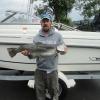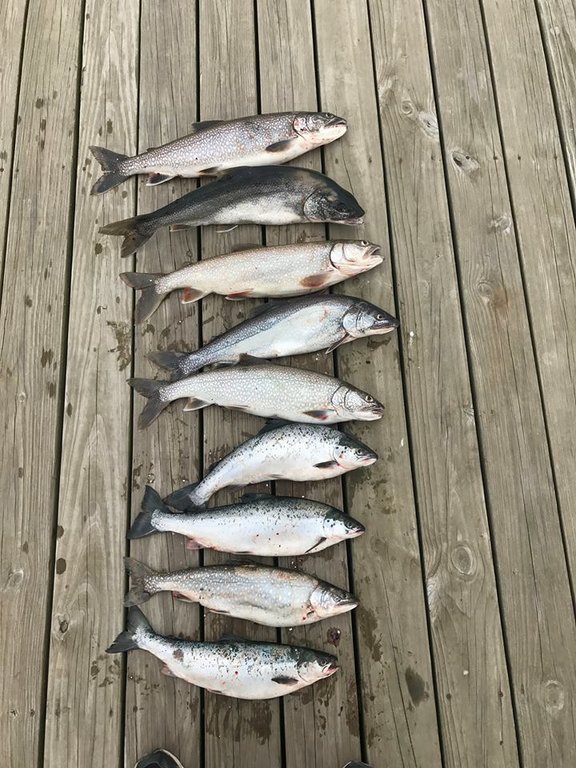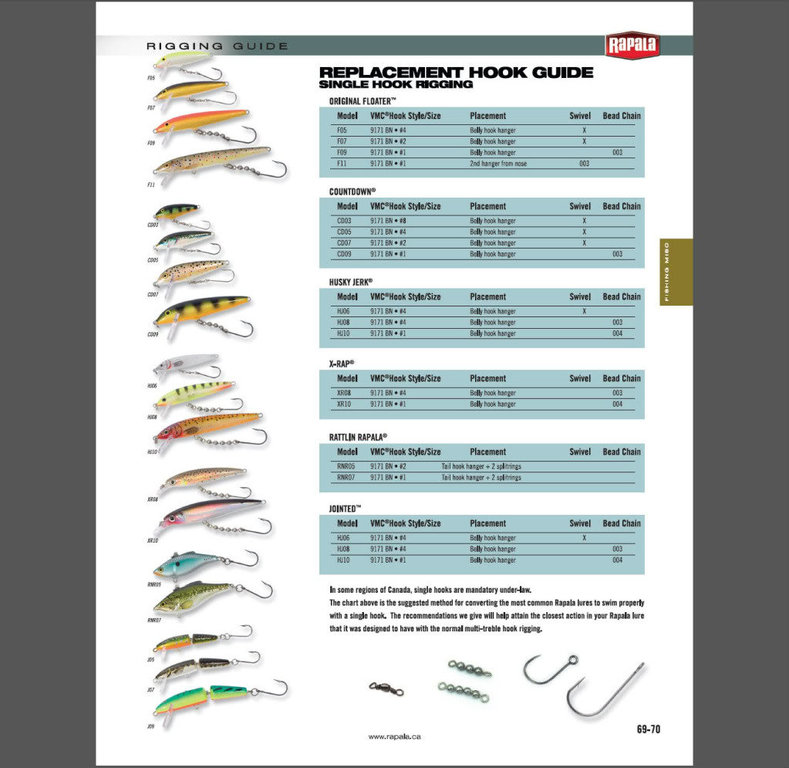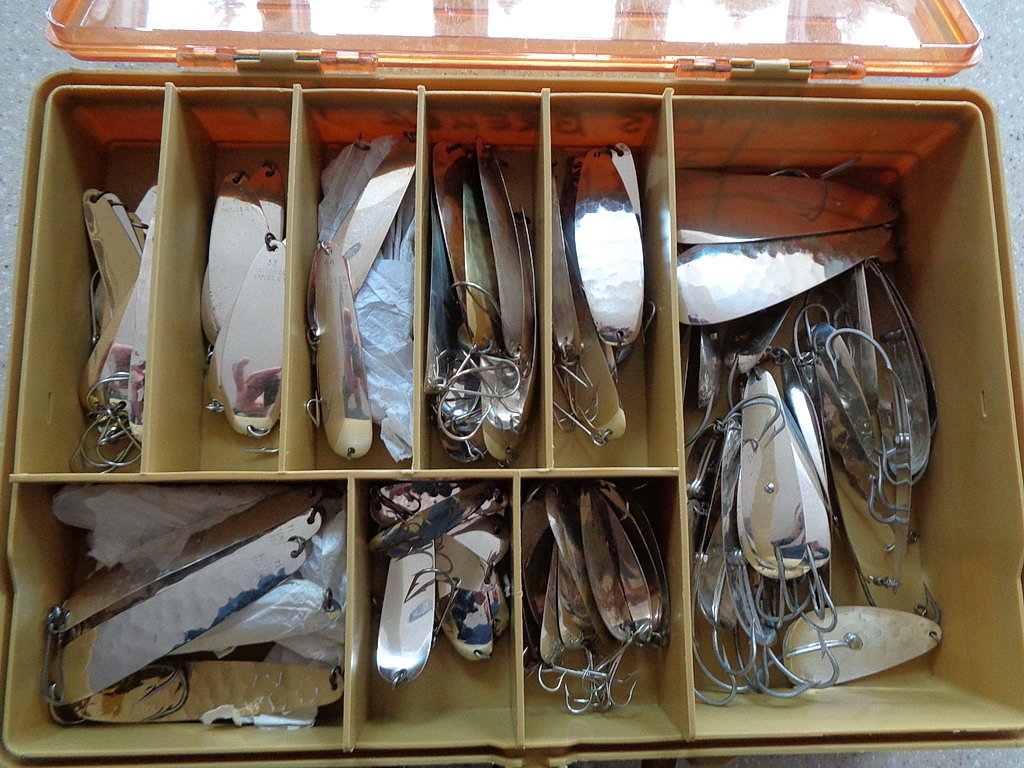-
Posts
13,872 -
Joined
-
Last visited
Everything posted by Sk8man
-
Glad you came through it Dan. Get your self back to health and fishing can be real good therapy (for whatever ails anyone)
-
I think it may be more like the automatic rigs that use regular jigging rods in them as the original tip downs (not the PVC etc. ones) that I am familiar with have actually been around since the 50's.
-

Remmington Outdoor company to file for Chapter 11 Bankruptcy
Sk8man replied to RUNNIN REBEL's topic in Open Lake Discussion
Good points. The amount of violence portrayed in video games, movies, on the TV and news has desensitized us to violence period. Many parents see nothing wrong with letting their kids watch it from an early age, let them spend copious amounts of time unsupervised watching it and we seem to forget that kids and teens as well as adults learn primarily by watching events, situations, and others in our environment. The copycat stuff is highly predictable after these major events and the media very much shares responsibility in this. When they report historical summaries of the numbers killed, give detailed descriptions of circumstances and authorities reaction to it, and "glorify" the weapons used - unstable people from various walks in life including adolescents children and adults feeling powerless in their own lives think to themselves: "I can be the center of attention too and I can show them how powerful I can become too" etc. The so-called "assault" weapons lend themselves to that feeling of power in the way that they have been portrayed in the media and tv and especially when they see adults seemingly terrified of these items and making all sorts of emotional comments about them. The bottom line is that there can be and have been mass shootings using other firearms as well but until these basic underlying issues of the glorification of violence itself in our culture and media is dealt with we will be seeing more of this happening regardless of the gun laws implemented. The mass shootings are a symptom of something more centrally wrong with our culture. -
Tha sounds like the way servicing should be done....the American way!
-

Remmington Outdoor company to file for Chapter 11 Bankruptcy
Sk8man replied to RUNNIN REBEL's topic in Open Lake Discussion
I think the extent of the economic side of this is yet to be determined. A friend of mine who is a gunsmith and has a federal firearms license said he is turning in the license because of the potential liability issues now appearing although he will still be doing the gunsmithing. I notice also one of the gunshops near me has appeared to close. -

Seneca Seneca Lake National Lake Trout Derby $10,000 1st
Sk8man replied to Fishstix's topic in Finger Lakes Discussion
I hear ya Stan.... I still fish Lake O and the Fingers and out of Hughes as well and you're rightat least you can usually find a place to hide or reduced the wind on the Fingers and it has always been my favorite place to be regardless of lake fished but the kings are also very addictive. We'll have to dig deep in our old school bags of tricks with these guys coming -

Seneca Seneca Lake National Lake Trout Derby $10,000 1st
Sk8man replied to Fishstix's topic in Finger Lakes Discussion
-

Seneca Seneca Lake National Lake Trout Derby $10,000 1st
Sk8man replied to Fishstix's topic in Finger Lakes Discussion
-

Seneca Seneca Lake National Lake Trout Derby $10,000 1st
Sk8man replied to Fishstix's topic in Finger Lakes Discussion
Kinda interseting....the differences of perspective and opinion. I've fished the derby for most of the years that it has been in existance with varied succcess and placing in the money a bunch of times over the years, being knocked down of major places by 1/100 of a pound a couple times (a bit frustrating) but I have never considered the derby a time for trying to catch the most fish. I 've always looked at it as a matter of trying to catch the biggest fish and that is what makes it fun as timing also plays a great part. I used to fish days before the derby to figure things out but after catching fish that would have won it both before and after a couple derbies I quit fishing beforehand as it seemed to spoil the "suspense" factor for me. Yes the numbers of fish caught seem to have dropped off significantly over the last few years but I also remember back in the1970's when it took about 6 or more hours to catch a legal sized trout and it made us fish a lot harder and put in longer hours but we also learned a lot during that time as you were forced to try new things and think things out more completely....it was a challenge. That is how I view the current situation...it is an opportunity for learning and a challenge. The folks that have put together this years derby have worked hard to revitalize it and keep things going and add some excitement to it by signiificantly increasing the prize. I applaude them for doing it and I for one would support this derby whether i was able to actually fish it or not. There may not be the numbers of fish available as in some years in the past but someone is going to catch the largest of the fish caught and they will happily return home $10,000 richer for it and have some fun in the process. I guess it is just a matter of perspective.... -
Zack and Keith you have PM's
-
If it isnt too late for you guys I'll go check things out here at the north end etc.and get back to you.
-
I think you are correct in the actual reg :https://govt.westlaw.com/nycrr/Document/I21c07304c22211ddb7c8fb397c5bd26b?viewType=FullText&originationContext=documenttoc&transitionType=CategoryPageItem&contextData=(sc.Default)&bhcp=1 Looks like they have considered hand lines the same as "tipups" or "tipdowns" so it would be a total of 7. I think that was probably so that the automatic devices would be included as well.
-

Remmington Outdoor company to file for Chapter 11 Bankruptcy
Sk8man replied to RUNNIN REBEL's topic in Open Lake Discussion
It is a shame that this country's elected officials... seem to throw the baby out with the bath water a lot basing decisions on emotional factors rather than gaining a full understanding of issues and then basing decisions on facts and data. These companies may want to divest themselves of the so-called "assault" weapons manufacturing and sales and concentrate on making the case about how unfair it is to penalize young people with no criminal records, or "actionable" mental health issues who just want to be able to hunt and target shoot and go to court to fight it based on that alone as the younger people are the companies future. As soon as these other weapons are included in the mix the whole issue becomes clouded and polarized because of the extreme emotions involved. It is too easy to lump all guns and users into one category for the anti-gun folks agenda. I should think it could also short circuit a lot of the animosity towards other firearms if it appeared that there was "give" on this issue andit could save some jobs. -
* I haven't seen anywhere where it mentions "combination" of lines not sure where it says that....Just the change in 2017 where 7 tipups are now permitted. I believe that the three rod limit is in addition to that.
-
X2 on the walleye boards although I have both. The walleye boards are more easily managed too and #30 lb braid on any of them for me with stainless pin replacements and three wraps on the release arm to hold with manual release when the boards are retrieved..
-
Not just on a boat.... 3 rods per person onshoreline or ice fishing as well
-

Perko rail mounted rod holders
Sk8man replied to Fly n Fish's topic in Classifieds - Buy, Sell, Trade or Rent
-
Hey choo-choo - Given the spread out nature of these sightings it looks as though the robins have copied the geese by sticking around NYS and taking their chances on finding food and I'll bet they are kicking themselves in the azz today with this weather
-
Some sticks are a lot more sensitive to weight changes than others so it pays to test them at the side of the boat so maybe just do one of each type to see the effect. Rapalas- especially the old ones or the solid ones rather than jointed seem more sensitive than a number of other stick types and I don't mess with them other than to make slight "tuning" changes if necessary.
-
Are the 77/200 transducer frequencies selectable in the units? That is can you set one to 200 and the other to 77?
-
I'm not sure what depth finders you have or the transducer frequencies but if you have two units and one (e.g. Lowrance) has a dual frequency transducer that allows the option of using both at one time, or separately (e.g. 83 and 200) you may be able to select just the frequency farthest from the other unit (say 83) if the other fixed transducer frequency is say 200 and it may be doable despite the exact positioning of the transducers. If the transducer are in fact the same frequency my hunch is they will probably interact.
-
I'm not sure of what diffences there might be between the 12 amp and the 6 amp at slow speed input, but I was told by a couple of marine mechanics that the alternator is not putting out much juice to the battery at slow trolling speeds. and that max output is only when the motor is running quite fast..
-
Bob. Yes Don I've done that with nearly all my spoons over the years. Changed out to Mustad Siwash SS 9510xxx's. I don't do it on the smallest Suttons though as there is a weight/balance issue that can affect the action substantially (e.g. #5, #6 and #8s). I don't change the solid rings when I replace the trebles though... I cut the trebles off with wire cutters and then replace with the singles as I like the solid rings that come standard on the Suttons and with careful selection of the single hooks the weight balance doesn't affect the action significantly. The hooks come with open end.
-






